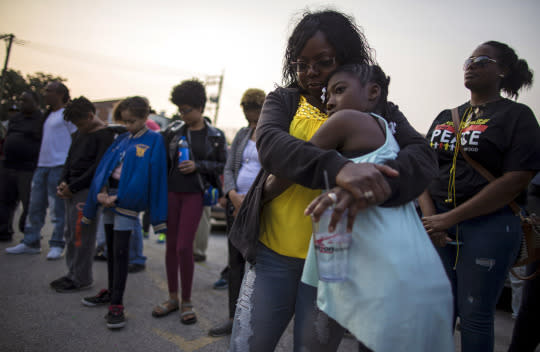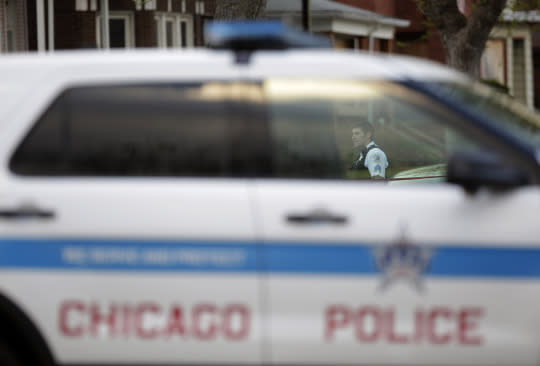Chicago’s gun violence: Can an algorithm stop the bloodshed?

Chicago police are using an algorithm to detect the likelihood that someone will become the perpetrator or victim of the stubbornly high gun violence that has plagued the city.
The Illinois Institute of Technology has developed software that weighs a variety of factors, such as a person’s arrest history, gang affiliation and social network, to decide whether someone will go on the Strategic Subject List (SSL). Each person is assigned a number from one to 500, with higher scores indicating greater danger.
“There’s about 1,400 individuals that are driving most of Chicago’s violence, and they score in the top numbers of the SSL,” Anthony Guglielmi, director of communications for the Chicago Police Department, said in an interview with Yahoo News.
According to police, it has proven remarkably accurate so far in 2016. The majority of people involved in the city’s violent crime have been on the list: over 70 percent of people arrested for murder, more than 80 percent of people arrested for shootings and more than 74 percent of shooting victims. Furthermore, over 60 percent of murder victims had an SSL score of more than 201.

Police say the “person-based predictive model” does not take race, sex, age or neighborhood into account, but it has still drawn the ire of some civil libertarians. Some have voiced concern over the use of lists of people likely to commit a crime in the future — somewhat (though not exactly) like the scenario in the dystopian science-fiction film “Minority Report.”
Karen Sheley, director of the Police Practices Project for the American Civil Liberties Union of Illinois, takes issue with what she calls the program’s lack of transparency.
“There’s a police database that’s populated with secret information, and people can’t challenge the accuracy of it. That’s where our concern is,” Sheley told Yahoo News. “What we have now is a list based on information that isn’t made public, and we know that people can’t protest being on it in any way.”
The SSL subjects, authorities said, are ranked on an interactive dashboard available to the department that allows cops to pull up details about the person’s criminal history, parole status, last district of residence and other information quickly.

Police are feeling pressure to do whatever is necessary to clamp down on soaring murder and shooting rates. USA Today reports that in 2015 there were 468 murders in Chicago and 2,900 shootings – a 12.5 percent and 13 percent increase, respectively, over the previous year. There were 52 homicides in January 2016, which is the highest in a single month since at least 2000, according to the newspaper.
Last week, the Chicago Police Department could confidently point to the SSL as instrumental in helping the force carry out its largest gang raid in recent memory.
On Friday, police superintendent Eddie Johnson announced the arrests of 140 people on drug and weapon charges. Of those, he said, 95 are documented gang members and 117 are on the SSL.
“Today, the Chicago Police Department is sending a clear message,” Johnson said at a press conference. “If you choose this lifestyle that fuels the engine of violence in our city, you will feel the full weight of our department and our partners in law enforcement. You will be held accountable for your actions.”

Eight of those arrested were admitted to the department’s diversion program, which provides drug treatment as an alternative to arrest and jail time, he added.
In proactive attempts to prevent violence, Chicago police reach out to people on the SSL to offer assistance and guidance for escaping a life of crime, Guglielmi said. These interventions often include social services, such as job training or educational opportunities.
“The way we do it is twofold. We do personal home visits where we literally knock on your door, and we do what is called a call-in, where it’s a group setting for individuals typically on parole or in a gang,” Guglielmi said. “We try to educate this population on the lifestyle that they’re in and warn them. We’re giving them a chance to turns their lives around.”
But not everyone cooperates.
For instance, Guglielmi said, earlier this month officers visited a teen at his house to inform him of his high probability of being a victim of gun violence, but he slammed the door in their faces. On Saturday, the teen was injured in a shooting.


